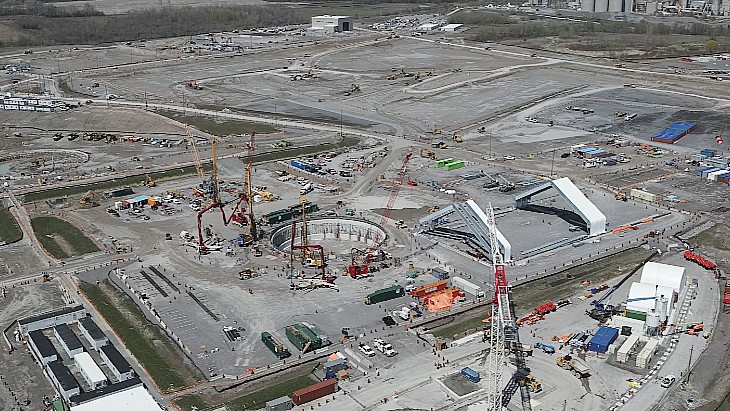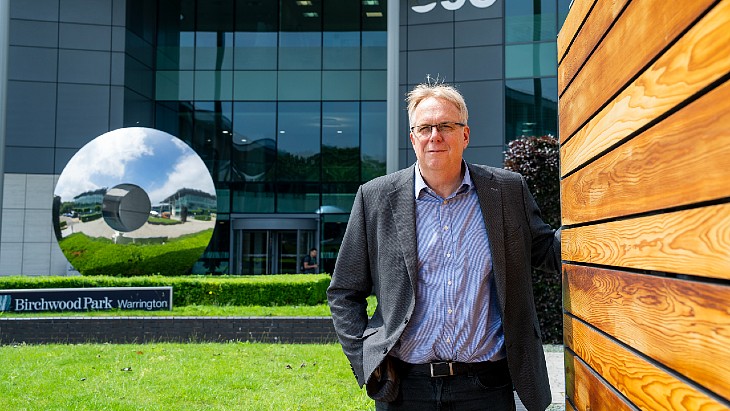Understandably in the world of nuclear, risk management is focused on safety. Wider considerations of longer term strategic risks and short- to medium-term project risks can easily be neglected. A broader approach in which risk management is embedded across your organisation could be key to improving overall business performance, writes Val Jonas.
Risk management in nuclear
Ideally, risk management should be an integral part of every business process for organisations working in waste and nuclear. However, the nuclear industry is unique in some of the challenges facing it.
If we start with the extreme time-frames we work to, effectively our industry life-cycle spans decades. Already this complicates the decision-making process, and sets the scene around the scope of risk that organisations need to factor into their management approach. For example, horizon scanning becomes necessary, taking into account threats such as catastrophic terrorism, cyber-crime as well as those posed by the natural world like earthquakes. We're contending with such huge risks - climate change and how this affects rising sea levels - that risk takes on an enormous role.
At the same time, we're dealing with government and stakeholder involvement in decision making which means yet another time-scale risk to factor in. Nuclear is an industry like no other in terms of using the term "bigger picture". The scale of time-frames in turn also shapes the risk process which is constantly moving.
The significance of waste disposal and decommissioning are also disproportionate in comparison to other industry sectors. Other programs, say in the transport or defence sectors, can focus mostly on the design-build-operate life-cycle phases, because of the relative insignificance of the end-of-life phase.
Stepping back from the longer-term picture, there are immediate risks from uncertain finance through new, unproven technology to the supply chain vulnerability. All these factors need to be built into a proactive risk management strategy structured to improve your business' performance.
Proactive risk management
Before we look at building a strategy, let's consider the areas where proactive risk management can support overall business effectiveness and performance. Given the time-scales the nuclear industry works in, we need to consider the short, medium and long-term focus for managing risk.
As Feike Sijbesma, CEO, Royal DSM said in a recent World Economic Forum report "The great challenges of our age cannot be solved by short-term actions only: they require long-term commitment, vision and resources ... It's only when a threat comes close that we really see it and realise the potential impact, with the risk that we have left it too late and will face much higher costs to deal with it."
In the short term, when we’re dealing with constrained finances, good risk management and analysis can help keep your programs on track; it provides you with the capability to deliver effectively, on time and within budget, and to required safety standards.
Moving onto the medium term, a coherent risk framework allows you to make risk informed decisions that build confidence in the business strategy.
And finally, taking the long-term view, it's about overall organisational viability. This is where you need to consider both the strategic business impact together with broader industry considerations.
Improving business performance
With a proactive risk mind-set in place, you can improve your decision-making processes to achieve short-, medium and long-term goals, looking at the effects of the decisions you make today further down the line.
Working within nuclear's extended cycles, this provides documented decision-making (including the basis for decisions and mitigating actions) for your colleagues working in projects in ten, 20 and 50 years' time.
Culturally, too, risk management can foster that confidence in terms of the way your organisation operates. So, you can demonstrate to regulators the proactive, considered approach at the heart of your business. This can extend to managing organisational reputation too, with internal and external audiences. Risk management can help you understand the threats to your reputation and how you can set about protecting this in a strategic way.
Developing a risk management strategy
How can your business build a successful risk management strategy that will improve your business' performance?
• It has to start from the top. Establishing organisational proactive risk management culture requires senior management sponsorship so this is essential to success.
• Ensure that your teams understand the risk framework, and that it includes all relevant types of risk i.e. not just safety.
• Make engaging in managing risk relevant and easy for people across different levels and departments.
• Encourage a culture of overt risk-based decision making that includes using sound analysis techniques such as cost, schedule and scenario analysis.
• Take proactive mitigation action when it's most cost effective, and have sound fall-back plans should the worst happen.
• Agree and use meaningful metrics for monitoring the effectiveness of risk management.
• Build on where lessons have been learnt and work around the context of your business and its aims.
• Engage your supply chain in proactive risk management; they need to be able to demonstrate that they can deliver on great risk management practice, strengthening your ability to win long term business.
A cultural shift around risk
The more your organisation makes risk-based decisions the more you can demonstrate business confidence. In the nuclear industry, it's very difficult to demonstrate certainty given the long time-scales we work with.
Risk management offers a powerful approach to developing resilience to uncertainty and future change. With a good decisions infrastructure in place, you can be confident that over the long-term, the risk agenda is getting the right level of attention.
We must become more honest about the huge risks we face in the future. From a cultural perspective, this is about rewarding people for making long term decisions that bring benefits to the wider global community.
It's clear that while the long timescales driving the nuclear cycle can obfuscate business goals. A proactive approach to risk management that takes into account the short, medium and long-term view, risks and opportunities can provide clarity to understand, respond to and manage the future.
A proactive approach, led from the top with a commitment to engaging all elements of the organisation will support success.
Val Jonas
Comments? Send them to editor@world-nuclear-news.org
Val Jonas is CEO of Oxford, UK-based Risk Decisions Group





_88592.jpg)
_96167_68292.jpg)



